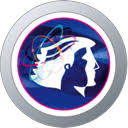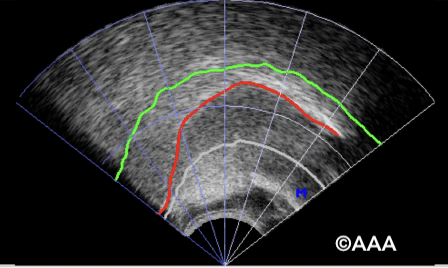Labfon – Summer Training in Experimental Methods
Goals
Acquiring applied knowledge about experimental methodologies to study voice, speech, language and behaviour, following a hands-on approach.
Audience
Students (undergraduate and graduate) and researchers interested in language, and language related areas, professionals (educators, teachers, psychologists, audiologists, and speech therapists).
Last...
Call
Registration is now open for the Summer School (organization: Phonetics and Phonology Lab, Departamento de Linguística Geral e Românica, CLUL, FLUL)
Register until July 21, 2024.
More information here
Sponsors

|
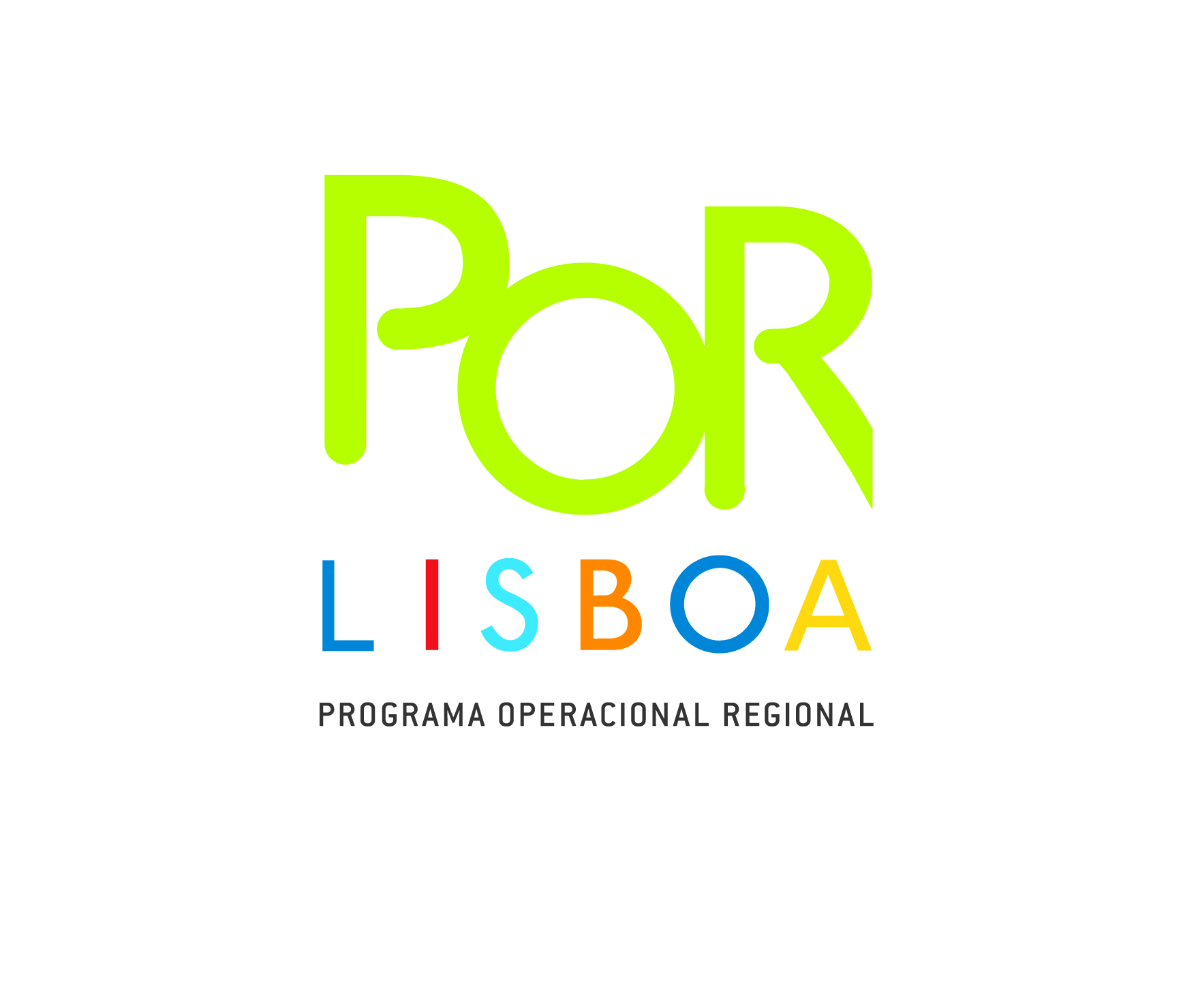 |
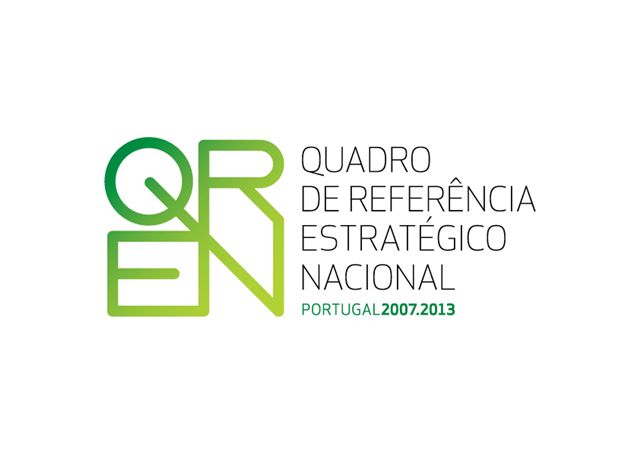 |
 |
 |
 |
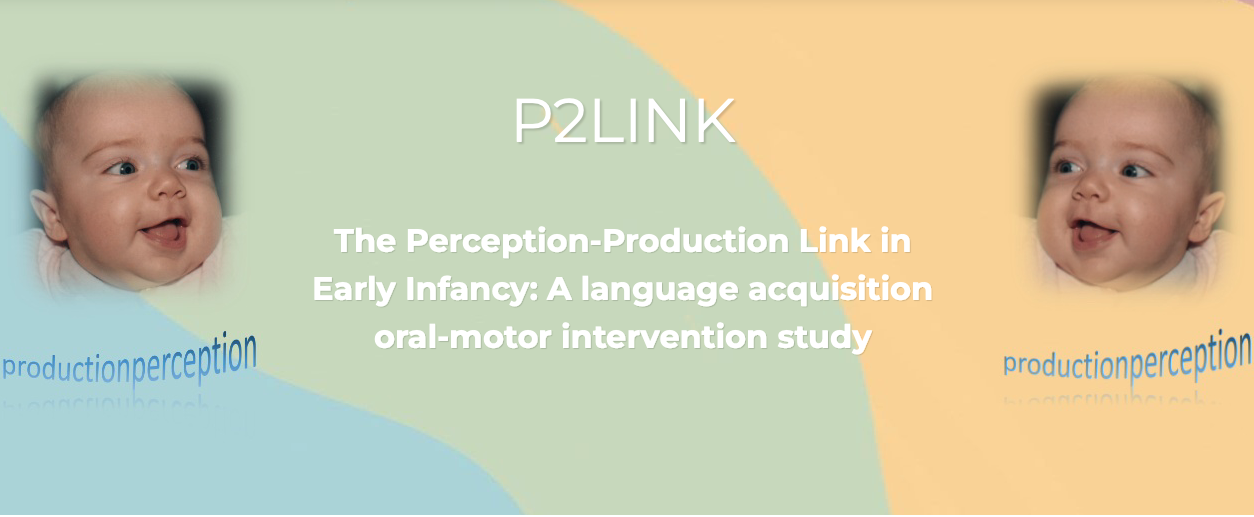
P2LINK
PTDC/LLT-LIN/1115/2021
|

|
Course I:
Praat - introduction to acoustic analysis with Praat; basic and advanced functions; analysis of typical and atypical adult and child speech; speech analysis in forensics.
References
Azhari, A., Truzzi, A., Neoh, M. J.-Y., Balagtas, J. P. M., Tan, H. H., Goh, P. P., Ang, X. A., Setoh, P., Rigo, P., Bornstein, M. H., & Esposito, G. (2020). A decade of infant neuroimaging research: What have we learned and where are we going?
Infant Behavior and Development, 58, 101389.
https://doi.org/10.1016/j.infbeh.2019.101389
Carter, B. T. & S. G. Luke. 2020. Best practices in eye tracking research.
International Journal of Psychophysiology, 155, 49–62.
https://doi.org/10.1016/j.ijpsycho.2020.05.010
ELAN – Linguistic Annotator, version 5.0.0-alpha. Manual (and tool) developed by Max Planck Institute for Psycholinguistics, The Language Archive, Nijmegen, The Netherlands. Available at
http://www.mpi.nl/corpus/manuals/manual-elan.pdf
Ekman, P., W. V. Friesen & J. C. Hager. 2002. Facial Action Coding System. Salt Lake City, UT: A Human Face.
Falck-Ytter, T., S. Bölte & G. Gredebäck. 2013. Eye Tracking in Early Autism Research.
Journal of Neurodevelopmental Disorders 5(1): 1-13.
Friederici, A. D. & M. A. Skeide. 2015. Neurocognition of language development. In Edith L. Bavin & Letitia R. Naigles (eds.)
The Cambridge Handbook of Child Language (pp. 61-88). [Online]. 2nd ed. Cambridge: Cambridge University Press.
Gredebäck, G., S. Johnson & C. Von Hofsten. 2009. Eye Tracking in Infancy Research. Developmental Neuropsychology 35(1): 1-19.
Holmqvist, K. 2011.
Eye Tracking: A Comprehensive Guide to Methods and Measures. Oxford: Oxford University Press.
McWeeny, S. & E. S. Norton. 2020. Understanding event-related potentials (ERPs) in clinical and basic language and communication disorders research: A tutorial.
International Journal of Language & Communication Disorders, 55(4), 445–457.
https://doi.org/10.1111/1460-6984.12535
Noiray, A., Abakarova, D. & Rubertus, E. (2018) “How Do Children Organize Their Speech in the First Years of Life? Insight from Ultrasound Imaging” in
Journal of Speech, Language, and Hearing Research. pp. 1-14.
Picton, T.W., S. Bentin, P. Berg, E. Donchin, S. A. Hillyard, R. Johnson, G. A. Miller, W. Ritter, D. S. Ruchkin, M. D. Rugg & M. J. Taylor. 2000. Guidelines for using human event-related potentials to study cognition: recording standards and publication criteria. Psychophysiology 37: 127-152.
Pisoni, D. B., & Remez, R. E. (Ed.). (2005).
The Handbook of Speech Perception. Blackwell Publishing.
Simonet, M. (2001) Technology in Phonetic Science: Setting Up a Basic Phonetics Laboratory. Studies in Hispanic and Lusophone Linguistics, volume 4, Issue 2.
Styler, W. 2016. Using Praat for Linguistic Research. Will Styler’s Homepage. URL:
http://savethevowels.org/praat/.
Turk, A., S. Nakai & M. Sugahara. 2006. Acoustic segment durations in prosodic research: a practical guide. In Stefan Sudhoff, Denisa Lenertova, Roland Meyer, Sandra Pappert, Petra Augurzky, Ina Mleinek, Nicole Richter & Johannes Schliesser (eds.). Methods in Empirical Prosody Research. Berlin: Mouton de Gruyter.
Wittenburg, P., H. Brugman, A. Russel, A. Klassmann & H. Sloetjes. 2006. ELAN: A professional framework for multimodality research. In
Proceedings of LREC (Vol. 2006, p. 5th). Available at
http://hnk.ffzg.hr/bibl/lrec2006/pdf/153_pdf.pdf
Course II:
Praat (for advanced users)- using scripts, manipulating sound files, and extracting data.
References
Azhari, A., Truzzi, A., Neoh, M. J.-Y., Balagtas, J. P. M., Tan, H. H., Goh, P. P., Ang, X. A., Setoh, P., Rigo, P., Bornstein, M. H., & Esposito, G. (2020). A decade of infant neuroimaging research: What have we learned and where are we going?
Infant Behavior and Development, 58, 101389.
https://doi.org/10.1016/j.infbeh.2019.101389
Carter, B. T. & S. G. Luke. 2020. Best practices in eye tracking research.
International Journal of Psychophysiology, 155, 49–62.
https://doi.org/10.1016/j.ijpsycho.2020.05.010
ELAN – Linguistic Annotator, version 5.0.0-alpha. Manual (and tool) developed by Max Planck Institute for Psycholinguistics, The Language Archive, Nijmegen, The Netherlands. Available at
http://www.mpi.nl/corpus/manuals/manual-elan.pdf
Ekman, P., W. V. Friesen & J. C. Hager. 2002. Facial Action Coding System. Salt Lake City, UT: A Human Face.
Falck-Ytter, T., S. Bölte & G. Gredebäck. 2013. Eye Tracking in Early Autism Research.
Journal of Neurodevelopmental Disorders 5(1): 1-13.
Friederici, A. D. & M. A. Skeide. 2015. Neurocognition of language development. In Edith L. Bavin & Letitia R. Naigles (eds.)
The Cambridge Handbook of Child Language (pp. 61-88). [Online]. 2nd ed. Cambridge: Cambridge University Press.
Gredebäck, G., S. Johnson & C. Von Hofsten. 2009. Eye Tracking in Infancy Research. Developmental Neuropsychology 35(1): 1-19.
Holmqvist, K. 2011.
Eye Tracking: A Comprehensive Guide to Methods and Measures. Oxford: Oxford University Press.
McWeeny, S. & E. S. Norton. 2020. Understanding event-related potentials (ERPs) in clinical and basic language and communication disorders research: A tutorial.
International Journal of Language & Communication Disorders, 55(4), 445–457.
https://doi.org/10.1111/1460-6984.12535
Noiray, A., Abakarova, D. & Rubertus, E. (2018) “How Do Children Organize Their Speech in the First Years of Life? Insight from Ultrasound Imaging” in
Journal of Speech, Language, and Hearing Research. pp. 1-14.
Picton, T.W., S. Bentin, P. Berg, E. Donchin, S. A. Hillyard, R. Johnson, G. A. Miller, W. Ritter, D. S. Ruchkin, M. D. Rugg & M. J. Taylor. 2000. Guidelines for using human event-related potentials to study cognition: recording standards and publication criteria. Psychophysiology 37: 127-152.
Pisoni, D. B., & Remez, R. E. (Ed.). (2005).
The Handbook of Speech Perception. Blackwell Publishing.
Simonet, M. (2001) Technology in Phonetic Science: Setting Up a Basic Phonetics Laboratory. Studies in Hispanic and Lusophone Linguistics, volume 4, Issue 2.
Styler, W. 2016. Using Praat for Linguistic Research. Will Styler’s Homepage. URL:
http://savethevowels.org/praat/.
Turk, A., S. Nakai & M. Sugahara. 2006. Acoustic segment durations in prosodic research: a practical guide. In Stefan Sudhoff, Denisa Lenertova, Roland Meyer, Sandra Pappert, Petra Augurzky, Ina Mleinek, Nicole Richter & Johannes Schliesser (eds.). Methods in Empirical Prosody Research. Berlin: Mouton de Gruyter.
Wittenburg, P., H. Brugman, A. Russel, A. Klassmann & H. Sloetjes. 2006. ELAN: A professional framework for multimodality research. In
Proceedings of LREC (Vol. 2006, p. 5th). Available at
http://hnk.ffzg.hr/bibl/lrec2006/pdf/153_pdf.pdf
Course IV:
Ultrasound - Introduction to ultrasound imaging for speech analysis; basics on how to conduct an ultrasound study; data collection and data analysis.
References:
Azhari, A., Truzzi, A., Neoh, M. J.-Y., Balagtas, J. P. M., Tan, H. H., Goh, P. P., Ang, X. A., Setoh, P., Rigo, P., Bornstein, M. H., & Esposito, G. (2020). A decade of infant neuroimaging research: What have we learned and where are we going?
Infant Behavior and Development, 58, 101389.
https://doi.org/10.1016/j.infbeh.2019.101389
Carter, B. T. & S. G. Luke. 2020. Best practices in eye tracking research.
International Journal of Psychophysiology, 155, 49–62.
https://doi.org/10.1016/j.ijpsycho.2020.05.010
ELAN – Linguistic Annotator, version 5.0.0-alpha. Manual (and tool) developed by Max Planck Institute for Psycholinguistics, The Language Archive, Nijmegen, The Netherlands. Available at
http://www.mpi.nl/corpus/manuals/manual-elan.pdf
Ekman, P., W. V. Friesen & J. C. Hager. 2002. Facial Action Coding System. Salt Lake City, UT: A Human Face.
Falck-Ytter, T., S. Bölte & G. Gredebäck. 2013. Eye Tracking in Early Autism Research.
Journal of Neurodevelopmental Disorders 5(1): 1-13.
Friederici, A. D. & M. A. Skeide. 2015. Neurocognition of language development. In Edith L. Bavin & Letitia R. Naigles (eds.)
The Cambridge Handbook of Child Language (pp. 61-88). [Online]. 2nd ed. Cambridge: Cambridge University Press.
Gredebäck, G., S. Johnson & C. Von Hofsten. 2009. Eye Tracking in Infancy Research. Developmental Neuropsychology 35(1): 1-19.
Holmqvist, K. 2011.
Eye Tracking: A Comprehensive Guide to Methods and Measures. Oxford: Oxford University Press.
McWeeny, S. & E. S. Norton. 2020. Understanding event-related potentials (ERPs) in clinical and basic language and communication disorders research: A tutorial.
International Journal of Language & Communication Disorders, 55(4), 445–457.
https://doi.org/10.1111/1460-6984.12535
Noiray, A., Abakarova, D. & Rubertus, E. (2018) “How Do Children Organize Their Speech in the First Years of Life? Insight from Ultrasound Imaging” in
Journal of Speech, Language, and Hearing Research. pp. 1-14.
Picton, T.W., S. Bentin, P. Berg, E. Donchin, S. A. Hillyard, R. Johnson, G. A. Miller, W. Ritter, D. S. Ruchkin, M. D. Rugg & M. J. Taylor. 2000. Guidelines for using human event-related potentials to study cognition: recording standards and publication criteria. Psychophysiology 37: 127-152.
Pisoni, D. B., & Remez, R. E. (Ed.). (2005).
The Handbook of Speech Perception. Blackwell Publishing.
Simonet, M. (2001) Technology in Phonetic Science: Setting Up a Basic Phonetics Laboratory. Studies in Hispanic and Lusophone Linguistics, volume 4, Issue 2.
Styler, W. 2016. Using Praat for Linguistic Research. Will Styler’s Homepage. URL:
http://savethevowels.org/praat/.
Turk, A., S. Nakai & M. Sugahara. 2006. Acoustic segment durations in prosodic research: a practical guide. In Stefan Sudhoff, Denisa Lenertova, Roland Meyer, Sandra Pappert, Petra Augurzky, Ina Mleinek, Nicole Richter & Johannes Schliesser (eds.). Methods in Empirical Prosody Research. Berlin: Mouton de Gruyter.
Wittenburg, P., H. Brugman, A. Russel, A. Klassmann & H. Sloetjes. 2006. ELAN: A professional framework for multimodality research. In
Proceedings of LREC (Vol. 2006, p. 5th). Available at
http://hnk.ffzg.hr/bibl/lrec2006/pdf/153_pdf.pdf
Course V:
ELAN - basic functions of audiovisual annotation
References:
Azhari, A., Truzzi, A., Neoh, M. J.-Y., Balagtas, J. P. M., Tan, H. H., Goh, P. P., Ang, X. A., Setoh, P., Rigo, P., Bornstein, M. H., & Esposito, G. (2020). A decade of infant neuroimaging research: What have we learned and where are we going?
Infant Behavior and Development, 58, 101389.
https://doi.org/10.1016/j.infbeh.2019.101389
Carter, B. T. & S. G. Luke. 2020. Best practices in eye tracking research.
International Journal of Psychophysiology, 155, 49–62.
https://doi.org/10.1016/j.ijpsycho.2020.05.010
ELAN – Linguistic Annotator, version 5.0.0-alpha. Manual (and tool) developed by Max Planck Institute for Psycholinguistics, The Language Archive, Nijmegen, The Netherlands. Available at
http://www.mpi.nl/corpus/manuals/manual-elan.pdf
Ekman, P., W. V. Friesen & J. C. Hager. 2002. Facial Action Coding System. Salt Lake City, UT: A Human Face.
Falck-Ytter, T., S. Bölte & G. Gredebäck. 2013. Eye Tracking in Early Autism Research.
Journal of Neurodevelopmental Disorders 5(1): 1-13.
Friederici, A. D. & M. A. Skeide. 2015. Neurocognition of language development. In Edith L. Bavin & Letitia R. Naigles (eds.)
The Cambridge Handbook of Child Language (pp. 61-88). [Online]. 2nd ed. Cambridge: Cambridge University Press.
Gredebäck, G., S. Johnson & C. Von Hofsten. 2009. Eye Tracking in Infancy Research. Developmental Neuropsychology 35(1): 1-19.
Holmqvist, K. 2011.
Eye Tracking: A Comprehensive Guide to Methods and Measures. Oxford: Oxford University Press.
McWeeny, S. & E. S. Norton. 2020. Understanding event-related potentials (ERPs) in clinical and basic language and communication disorders research: A tutorial.
International Journal of Language & Communication Disorders, 55(4), 445–457.
https://doi.org/10.1111/1460-6984.12535
Noiray, A., Abakarova, D. & Rubertus, E. (2018) “How Do Children Organize Their Speech in the First Years of Life? Insight from Ultrasound Imaging” in
Journal of Speech, Language, and Hearing Research. pp. 1-14.
Picton, T.W., S. Bentin, P. Berg, E. Donchin, S. A. Hillyard, R. Johnson, G. A. Miller, W. Ritter, D. S. Ruchkin, M. D. Rugg & M. J. Taylor. 2000. Guidelines for using human event-related potentials to study cognition: recording standards and publication criteria. Psychophysiology 37: 127-152.
Pisoni, D. B., & Remez, R. E. (Ed.). (2005).
The Handbook of Speech Perception. Blackwell Publishing.
Simonet, M. (2001) Technology in Phonetic Science: Setting Up a Basic Phonetics Laboratory. Studies in Hispanic and Lusophone Linguistics, volume 4, Issue 2.
Styler, W. 2016. Using Praat for Linguistic Research. Will Styler’s Homepage. URL:
http://savethevowels.org/praat/.
Turk, A., S. Nakai & M. Sugahara. 2006. Acoustic segment durations in prosodic research: a practical guide. In Stefan Sudhoff, Denisa Lenertova, Roland Meyer, Sandra Pappert, Petra Augurzky, Ina Mleinek, Nicole Richter & Johannes Schliesser (eds.). Methods in Empirical Prosody Research. Berlin: Mouton de Gruyter.
Wittenburg, P., H. Brugman, A. Russel, A. Klassmann & H. Sloetjes. 2006. ELAN: A professional framework for multimodality research. In
Proceedings of LREC (Vol. 2006, p. 5th). Available at
http://hnk.ffzg.hr/bibl/lrec2006/pdf/153_pdf.pdf
Course VI:
ELAN (for advanced users) - Audiovisual annotation using coding systems; Praat/ELAN interface.
References:
Azhari, A., Truzzi, A., Neoh, M. J.-Y., Balagtas, J. P. M., Tan, H. H., Goh, P. P., Ang, X. A., Setoh, P., Rigo, P., Bornstein, M. H., & Esposito, G. (2020). A decade of infant neuroimaging research: What have we learned and where are we going?
Infant Behavior and Development, 58, 101389.
https://doi.org/10.1016/j.infbeh.2019.101389
Carter, B. T. & S. G. Luke. 2020. Best practices in eye tracking research.
International Journal of Psychophysiology, 155, 49–62.
https://doi.org/10.1016/j.ijpsycho.2020.05.010
ELAN – Linguistic Annotator, version 5.0.0-alpha. Manual (and tool) developed by Max Planck Institute for Psycholinguistics, The Language Archive, Nijmegen, The Netherlands. Available at
http://www.mpi.nl/corpus/manuals/manual-elan.pdf
Ekman, P., W. V. Friesen & J. C. Hager. 2002. Facial Action Coding System. Salt Lake City, UT: A Human Face.
Falck-Ytter, T., S. Bölte & G. Gredebäck. 2013. Eye Tracking in Early Autism Research.
Journal of Neurodevelopmental Disorders 5(1): 1-13.
Friederici, A. D. & M. A. Skeide. 2015. Neurocognition of language development. In Edith L. Bavin & Letitia R. Naigles (eds.)
The Cambridge Handbook of Child Language (pp. 61-88). [Online]. 2nd ed. Cambridge: Cambridge University Press.
Gredebäck, G., S. Johnson & C. Von Hofsten. 2009. Eye Tracking in Infancy Research. Developmental Neuropsychology 35(1): 1-19.
Holmqvist, K. 2011.
Eye Tracking: A Comprehensive Guide to Methods and Measures. Oxford: Oxford University Press.
McWeeny, S. & E. S. Norton. 2020. Understanding event-related potentials (ERPs) in clinical and basic language and communication disorders research: A tutorial.
International Journal of Language & Communication Disorders, 55(4), 445–457.
https://doi.org/10.1111/1460-6984.12535
Noiray, A., Abakarova, D. & Rubertus, E. (2018) “How Do Children Organize Their Speech in the First Years of Life? Insight from Ultrasound Imaging” in
Journal of Speech, Language, and Hearing Research. pp. 1-14.
Picton, T.W., S. Bentin, P. Berg, E. Donchin, S. A. Hillyard, R. Johnson, G. A. Miller, W. Ritter, D. S. Ruchkin, M. D. Rugg & M. J. Taylor. 2000. Guidelines for using human event-related potentials to study cognition: recording standards and publication criteria. Psychophysiology 37: 127-152.
Pisoni, D. B., & Remez, R. E. (Ed.). (2005).
The Handbook of Speech Perception. Blackwell Publishing.
Simonet, M. (2001) Technology in Phonetic Science: Setting Up a Basic Phonetics Laboratory. Studies in Hispanic and Lusophone Linguistics, volume 4, Issue 2.
Styler, W. 2016. Using Praat for Linguistic Research. Will Styler’s Homepage. URL:
http://savethevowels.org/praat/.
Turk, A., S. Nakai & M. Sugahara. 2006. Acoustic segment durations in prosodic research: a practical guide. In Stefan Sudhoff, Denisa Lenertova, Roland Meyer, Sandra Pappert, Petra Augurzky, Ina Mleinek, Nicole Richter & Johannes Schliesser (eds.). Methods in Empirical Prosody Research. Berlin: Mouton de Gruyter.
Wittenburg, P., H. Brugman, A. Russel, A. Klassmann & H. Sloetjes. 2006. ELAN: A professional framework for multimodality research. In
Proceedings of LREC (Vol. 2006, p. 5th). Available at
http://hnk.ffzg.hr/bibl/lrec2006/pdf/153_pdf.pdf
Course VII:
Eyetracking - introduction to eye-tracking; basic and advanced software functions to design and run experiments (EyeLink 1000 Plus: Experiment Builder, Data Viewer; SMI RED 500 system, iView, Experiment Centre, BeGaze, Observational Package and Video Package).
References:
Azhari, A., Truzzi, A., Neoh, M. J.-Y., Balagtas, J. P. M., Tan, H. H., Goh, P. P., Ang, X. A., Setoh, P., Rigo, P., Bornstein, M. H., & Esposito, G. (2020). A decade of infant neuroimaging research: What have we learned and where are we going?
Infant Behavior and Development, 58, 101389.
https://doi.org/10.1016/j.infbeh.2019.101389
Carter, B. T. & S. G. Luke. 2020. Best practices in eye tracking research.
International Journal of Psychophysiology, 155, 49–62.
https://doi.org/10.1016/j.ijpsycho.2020.05.010
ELAN – Linguistic Annotator, version 5.0.0-alpha. Manual (and tool) developed by Max Planck Institute for Psycholinguistics, The Language Archive, Nijmegen, The Netherlands. Available at
http://www.mpi.nl/corpus/manuals/manual-elan.pdf
Ekman, P., W. V. Friesen & J. C. Hager. 2002. Facial Action Coding System. Salt Lake City, UT: A Human Face.
Falck-Ytter, T., S. Bölte & G. Gredebäck. 2013. Eye Tracking in Early Autism Research.
Journal of Neurodevelopmental Disorders 5(1): 1-13.
Friederici, A. D. & M. A. Skeide. 2015. Neurocognition of language development. In Edith L. Bavin & Letitia R. Naigles (eds.)
The Cambridge Handbook of Child Language (pp. 61-88). [Online]. 2nd ed. Cambridge: Cambridge University Press.
Gredebäck, G., S. Johnson & C. Von Hofsten. 2009. Eye Tracking in Infancy Research. Developmental Neuropsychology 35(1): 1-19.
Holmqvist, K. 2011.
Eye Tracking: A Comprehensive Guide to Methods and Measures. Oxford: Oxford University Press.
McWeeny, S. & E. S. Norton. 2020. Understanding event-related potentials (ERPs) in clinical and basic language and communication disorders research: A tutorial.
International Journal of Language & Communication Disorders, 55(4), 445–457.
https://doi.org/10.1111/1460-6984.12535
Noiray, A., Abakarova, D. & Rubertus, E. (2018) “How Do Children Organize Their Speech in the First Years of Life? Insight from Ultrasound Imaging” in
Journal of Speech, Language, and Hearing Research. pp. 1-14.
Picton, T.W., S. Bentin, P. Berg, E. Donchin, S. A. Hillyard, R. Johnson, G. A. Miller, W. Ritter, D. S. Ruchkin, M. D. Rugg & M. J. Taylor. 2000. Guidelines for using human event-related potentials to study cognition: recording standards and publication criteria. Psychophysiology 37: 127-152.
Pisoni, D. B., & Remez, R. E. (Ed.). (2005).
The Handbook of Speech Perception. Blackwell Publishing.
Simonet, M. (2001) Technology in Phonetic Science: Setting Up a Basic Phonetics Laboratory. Studies in Hispanic and Lusophone Linguistics, volume 4, Issue 2.
Styler, W. 2016. Using Praat for Linguistic Research. Will Styler’s Homepage. URL:
http://savethevowels.org/praat/.
Turk, A., S. Nakai & M. Sugahara. 2006. Acoustic segment durations in prosodic research: a practical guide. In Stefan Sudhoff, Denisa Lenertova, Roland Meyer, Sandra Pappert, Petra Augurzky, Ina Mleinek, Nicole Richter & Johannes Schliesser (eds.). Methods in Empirical Prosody Research. Berlin: Mouton de Gruyter.
Wittenburg, P., H. Brugman, A. Russel, A. Klassmann & H. Sloetjes. 2006. ELAN: A professional framework for multimodality research. In
Proceedings of LREC (Vol. 2006, p. 5th). Available at
http://hnk.ffzg.hr/bibl/lrec2006/pdf/153_pdf.pdf
Course VIII:
Eye-tracking (for advanced users) - experimental design with different paradigms; data analysis functions.
References:
Azhari, A., Truzzi, A., Neoh, M. J.-Y., Balagtas, J. P. M., Tan, H. H., Goh, P. P., Ang, X. A., Setoh, P., Rigo, P., Bornstein, M. H., & Esposito, G. (2020). A decade of infant neuroimaging research: What have we learned and where are we going?
Infant Behavior and Development, 58, 101389.
https://doi.org/10.1016/j.infbeh.2019.101389
Carter, B. T. & S. G. Luke. 2020. Best practices in eye tracking research.
International Journal of Psychophysiology, 155, 49–62.
https://doi.org/10.1016/j.ijpsycho.2020.05.010
ELAN – Linguistic Annotator, version 5.0.0-alpha. Manual (and tool) developed by Max Planck Institute for Psycholinguistics, The Language Archive, Nijmegen, The Netherlands. Available at
http://www.mpi.nl/corpus/manuals/manual-elan.pdf
Ekman, P., W. V. Friesen & J. C. Hager. 2002. Facial Action Coding System. Salt Lake City, UT: A Human Face.
Falck-Ytter, T., S. Bölte & G. Gredebäck. 2013. Eye Tracking in Early Autism Research.
Journal of Neurodevelopmental Disorders 5(1): 1-13.
Friederici, A. D. & M. A. Skeide. 2015. Neurocognition of language development. In Edith L. Bavin & Letitia R. Naigles (eds.)
The Cambridge Handbook of Child Language (pp. 61-88). [Online]. 2nd ed. Cambridge: Cambridge University Press.
Gredebäck, G., S. Johnson & C. Von Hofsten. 2009. Eye Tracking in Infancy Research. Developmental Neuropsychology 35(1): 1-19.
Holmqvist, K. 2011.
Eye Tracking: A Comprehensive Guide to Methods and Measures. Oxford: Oxford University Press.
McWeeny, S. & E. S. Norton. 2020. Understanding event-related potentials (ERPs) in clinical and basic language and communication disorders research: A tutorial.
International Journal of Language & Communication Disorders, 55(4), 445–457.
https://doi.org/10.1111/1460-6984.12535
Noiray, A., Abakarova, D. & Rubertus, E. (2018) “How Do Children Organize Their Speech in the First Years of Life? Insight from Ultrasound Imaging” in
Journal of Speech, Language, and Hearing Research. pp. 1-14.
Picton, T.W., S. Bentin, P. Berg, E. Donchin, S. A. Hillyard, R. Johnson, G. A. Miller, W. Ritter, D. S. Ruchkin, M. D. Rugg & M. J. Taylor. 2000. Guidelines for using human event-related potentials to study cognition: recording standards and publication criteria. Psychophysiology 37: 127-152.
Pisoni, D. B., & Remez, R. E. (Ed.). (2005).
The Handbook of Speech Perception. Blackwell Publishing.
Simonet, M. (2001) Technology in Phonetic Science: Setting Up a Basic Phonetics Laboratory. Studies in Hispanic and Lusophone Linguistics, volume 4, Issue 2.
Styler, W. 2016. Using Praat for Linguistic Research. Will Styler’s Homepage. URL:
http://savethevowels.org/praat/.
Turk, A., S. Nakai & M. Sugahara. 2006. Acoustic segment durations in prosodic research: a practical guide. In Stefan Sudhoff, Denisa Lenertova, Roland Meyer, Sandra Pappert, Petra Augurzky, Ina Mleinek, Nicole Richter & Johannes Schliesser (eds.). Methods in Empirical Prosody Research. Berlin: Mouton de Gruyter.
Wittenburg, P., H. Brugman, A. Russel, A. Klassmann & H. Sloetjes. 2006. ELAN: A professional framework for multimodality research. In
Proceedings of LREC (Vol. 2006, p. 5th). Available at
http://hnk.ffzg.hr/bibl/lrec2006/pdf/153_pdf.pdf
Course IX:
Electroencephalography and Event Related Potentials – Introduction to EEG and ERP; basics of how to conduct an ERP study; data collection and data analysis; artifacts, filtering, segmentation, averaging (Synamps RT, Curry Package).
References:
Azhari, A., Truzzi, A., Neoh, M. J.-Y., Balagtas, J. P. M., Tan, H. H., Goh, P. P., Ang, X. A., Setoh, P., Rigo, P., Bornstein, M. H., & Esposito, G. (2020). A decade of infant neuroimaging research: What have we learned and where are we going?
Infant Behavior and Development, 58, 101389.
https://doi.org/10.1016/j.infbeh.2019.101389
Carter, B. T. & S. G. Luke. 2020. Best practices in eye tracking research.
International Journal of Psychophysiology, 155, 49–62.
https://doi.org/10.1016/j.ijpsycho.2020.05.010
ELAN – Linguistic Annotator, version 5.0.0-alpha. Manual (and tool) developed by Max Planck Institute for Psycholinguistics, The Language Archive, Nijmegen, The Netherlands. Available at
http://www.mpi.nl/corpus/manuals/manual-elan.pdf
Ekman, P., W. V. Friesen & J. C. Hager. 2002. Facial Action Coding System. Salt Lake City, UT: A Human Face.
Falck-Ytter, T., S. Bölte & G. Gredebäck. 2013. Eye Tracking in Early Autism Research.
Journal of Neurodevelopmental Disorders 5(1): 1-13.
Friederici, A. D. & M. A. Skeide. 2015. Neurocognition of language development. In Edith L. Bavin & Letitia R. Naigles (eds.)
The Cambridge Handbook of Child Language (pp. 61-88). [Online]. 2nd ed. Cambridge: Cambridge University Press.
Gredebäck, G., S. Johnson & C. Von Hofsten. 2009. Eye Tracking in Infancy Research. Developmental Neuropsychology 35(1): 1-19.
Holmqvist, K. 2011.
Eye Tracking: A Comprehensive Guide to Methods and Measures. Oxford: Oxford University Press.
McWeeny, S. & E. S. Norton. 2020. Understanding event-related potentials (ERPs) in clinical and basic language and communication disorders research: A tutorial.
International Journal of Language & Communication Disorders, 55(4), 445–457.
https://doi.org/10.1111/1460-6984.12535
Noiray, A., Abakarova, D. & Rubertus, E. (2018) “How Do Children Organize Their Speech in the First Years of Life? Insight from Ultrasound Imaging” in
Journal of Speech, Language, and Hearing Research. pp. 1-14.
Picton, T.W., S. Bentin, P. Berg, E. Donchin, S. A. Hillyard, R. Johnson, G. A. Miller, W. Ritter, D. S. Ruchkin, M. D. Rugg & M. J. Taylor. 2000. Guidelines for using human event-related potentials to study cognition: recording standards and publication criteria. Psychophysiology 37: 127-152.
Pisoni, D. B., & Remez, R. E. (Ed.). (2005).
The Handbook of Speech Perception. Blackwell Publishing.
Simonet, M. (2001) Technology in Phonetic Science: Setting Up a Basic Phonetics Laboratory. Studies in Hispanic and Lusophone Linguistics, volume 4, Issue 2.
Styler, W. 2016. Using Praat for Linguistic Research. Will Styler’s Homepage. URL:
http://savethevowels.org/praat/.
Turk, A., S. Nakai & M. Sugahara. 2006. Acoustic segment durations in prosodic research: a practical guide. In Stefan Sudhoff, Denisa Lenertova, Roland Meyer, Sandra Pappert, Petra Augurzky, Ina Mleinek, Nicole Richter & Johannes Schliesser (eds.). Methods in Empirical Prosody Research. Berlin: Mouton de Gruyter.
Wittenburg, P., H. Brugman, A. Russel, A. Klassmann & H. Sloetjes. 2006. ELAN: A professional framework for multimodality research. In
Proceedings of LREC (Vol. 2006, p. 5th). Available at
http://hnk.ffzg.hr/bibl/lrec2006/pdf/153_pdf.pdf
Course III:
Tools for the study of perception - Introduction to some of the most common paradigms for the study of perception. Basic functions of software used to run perception experiments with children and adults (SuperLab).
References:
Azhari, A., Truzzi, A., Neoh, M. J.-Y., Balagtas, J. P. M., Tan, H. H., Goh, P. P., Ang, X. A., Setoh, P., Rigo, P., Bornstein, M. H., & Esposito, G. (2020). A decade of infant neuroimaging research: What have we learned and where are we going?
Infant Behavior and Development, 58, 101389.
https://doi.org/10.1016/j.infbeh.2019.101389
Carter, B. T. & S. G. Luke. 2020. Best practices in eye tracking research.
International Journal of Psychophysiology, 155, 49–62.
https://doi.org/10.1016/j.ijpsycho.2020.05.010
ELAN – Linguistic Annotator, version 5.0.0-alpha. Manual (and tool) developed by Max Planck Institute for Psycholinguistics, The Language Archive, Nijmegen, The Netherlands. Available at
http://www.mpi.nl/corpus/manuals/manual-elan.pdf
Ekman, P., W. V. Friesen & J. C. Hager. 2002. Facial Action Coding System. Salt Lake City, UT: A Human Face.
Falck-Ytter, T., S. Bölte & G. Gredebäck. 2013. Eye Tracking in Early Autism Research.
Journal of Neurodevelopmental Disorders 5(1): 1-13.
Friederici, A. D. & M. A. Skeide. 2015. Neurocognition of language development. In Edith L. Bavin & Letitia R. Naigles (eds.)
The Cambridge Handbook of Child Language (pp. 61-88). [Online]. 2nd ed. Cambridge: Cambridge University Press.
Gredebäck, G., S. Johnson & C. Von Hofsten. 2009. Eye Tracking in Infancy Research. Developmental Neuropsychology 35(1): 1-19.
Holmqvist, K. 2011.
Eye Tracking: A Comprehensive Guide to Methods and Measures. Oxford: Oxford University Press.
McWeeny, S. & E. S. Norton. 2020. Understanding event-related potentials (ERPs) in clinical and basic language and communication disorders research: A tutorial.
International Journal of Language & Communication Disorders, 55(4), 445–457.
https://doi.org/10.1111/1460-6984.12535
Noiray, A., Abakarova, D. & Rubertus, E. (2018) “How Do Children Organize Their Speech in the First Years of Life? Insight from Ultrasound Imaging” in
Journal of Speech, Language, and Hearing Research. pp. 1-14.
Picton, T.W., S. Bentin, P. Berg, E. Donchin, S. A. Hillyard, R. Johnson, G. A. Miller, W. Ritter, D. S. Ruchkin, M. D. Rugg & M. J. Taylor. 2000. Guidelines for using human event-related potentials to study cognition: recording standards and publication criteria. Psychophysiology 37: 127-152.
Pisoni, D. B., & Remez, R. E. (Ed.). (2005).
The Handbook of Speech Perception. Blackwell Publishing.
Simonet, M. (2001) Technology in Phonetic Science: Setting Up a Basic Phonetics Laboratory. Studies in Hispanic and Lusophone Linguistics, volume 4, Issue 2.
Styler, W. 2016. Using Praat for Linguistic Research. Will Styler’s Homepage. URL:
http://savethevowels.org/praat/.
Turk, A., S. Nakai & M. Sugahara. 2006. Acoustic segment durations in prosodic research: a practical guide. In Stefan Sudhoff, Denisa Lenertova, Roland Meyer, Sandra Pappert, Petra Augurzky, Ina Mleinek, Nicole Richter & Johannes Schliesser (eds.). Methods in Empirical Prosody Research. Berlin: Mouton de Gruyter.
Wittenburg, P., H. Brugman, A. Russel, A. Klassmann & H. Sloetjes. 2006. ELAN: A professional framework for multimodality research. In
Proceedings of LREC (Vol. 2006, p. 5th). Available at
http://hnk.ffzg.hr/bibl/lrec2006/pdf/153_pdf.pdf

